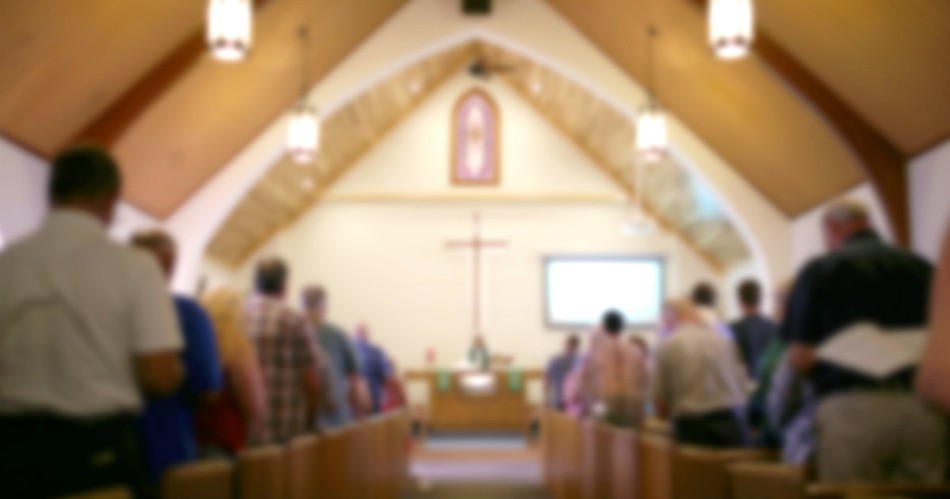I call myself a “spiritual mutt.”
I was raised in a small church of a more Arminian church organization. But I loved Jesus and talking about him, so over the years, I found myself attending, visiting, or being a part of several different types of churches. I even planted a church and served in missions, continuing to encounter other denominations and styles. From house church to bigger churches to Baptist and charismatic, I have found community in a variety of contexts.
With these experiences, I sought to understand, even if I didn’t always agree. I ended up learning value from Christians across the traditions. One major model for church organization is the synod, an attempt to find the proper relationship between local responsibility and a larger, connected structure.
What Is a Synod Church?
The word synod comes from the Greek synodos, which means “coming together” or “a meeting on the way.” Therefore, the synod model highlights the community of saints in leadership and overall organization, believing in the leading of the Holy Spirit in the gathering of believers.
Rather than relying on one leader to make congregational choices, the church gathers leaders and members to listen, discuss, and make decisions collectively. This process comes from the belief that Christ is especially present when believers, two or more, come together in his name. The synod believes the Spirit speaks better through the gathered Christian family. A synod church seeks to be both unified and diverse, with each voice contributing to the whole.
The synod structure has several key aspects. First, it has representatives to serve as leaders—pastors, elders, lay leaders. These men and women form a type of council of elders to represent the local body, to bring up concerns and wisdom from the congregation. Second, a synod church participates in larger councils or assemblies of churches where teaching, prayer, and discussion influences or makes major organizational decisions. Third, the synod ensures no single leader dominates but all work together in submission to the Spirit and Scripture in church matters.
A synod church generally practices a collective discernment, making decisions by consensus. Every member, therefore, should study Scripture, listen to reports, and pray together before making these choices, often through formal voting. The pastor doesn’t make the ultimate decision. Everyone is encouraged to speak and give input. Of course, there will be disagreements, but the goal remains for all to look at Christ and pray for insight to come to a decision. This requires humility.
God calls the church to unity and diversity. The synod model relies upon the biblical doctrine of the Spirit within all believers and the church as a whole. This structure believes the church operates best when everyone’s gifts are engaged. By walking in fellowship and accountability, the synod model tries to express the vision of the New Testament church as a living family and body with Christ as the head.
What Denominations Follow the Synod Church Model?
The synod church model appears in several denominations, while each adapts it in various ways.
Many Lutheran churches organize around synods, often as the main unit of governance. Their synod operates regionally. Local congregations send representatives of pastors and lay leaders to meet in these assemblies. The assemblies discuss doctrine, missions, and churchwide policies. Lutheran synods try to balance the independence of a local congregation while keeping them accountable to the wider church.
Presbyterian and Reformed traditions have a layered synod structure. Individual congregations elect elders to serve in the church and on regional councils called presbyteries, which connect to larger synods. These gatherings discuss theological disagreements, oversee the pastors, and pass down guidance to the local churches. The Presbyterian synod reflects more of a belief in a body of elders rather than a single leader.
Many Methodist traditions have conferences, functioning like a synod. Delegates from local congregations (pastors and lay members) gather to discuss important church doctrine and missions. These conferences have serious impact across the denomination, including church law and practice. Methodists practice this under the belief that all congregations belong to a wider family connected together in mission and responsibility.
The Eastern Orthodox tradition holds synods for governance. Bishops gather in local or regional synods to coordinate ministries and resolve any disputes, so the whole organization can remain unified under central doctrines. The Catholic Church also has synods with priests and bishops at regional and worldwide gatherings. Lay members are rarely a part of these conferences, however. And in the Catholic system, the pope has the final authority.
What New Testament Scriptures Support the Synod Model?
A major example comes from Acts 15, called the Jerusalem Council. As Paul’s missionary efforts became brought more Gentiles into the church, leaders began to question what to teach these non-Jewish Christians, specifically regarding the Mosaic Law. Apostles and elders gathered to discuss it. They prayed, debated, and listened to people like Paul and others. As we can imagine, this was a heated affair. In the end, they agreed the Gentile Christians didn’t need to follow the Mosaic Law, only to refrain from sexual sin, idolatry, and food dedicated to idols. Luke records the council as saying, “It seemed good to the Holy Spirit and to us.” (Acts 15:28) They even sent a letter out to the churches making the decision known. The denominations using synods for the larger organization use this as a basis for their practices.
Regarding local leadership, Paul often talked about leadership like elders and servants. Ephesians 4:11-16 describes how Christ gives leadership gifts for roles like apostles, prophets, evangelists, pastors, and teachers to build up the believers to do the ministry in unity. This is a different picture than one main pastor leading but a group of leaders working together. We could also point to Titus 1:5, where Paul tells Titus to appoint a number of elders in every town.
1 Corinthians 12-14 further describes how involved every church member becomes in worship and the local church. 1 Corinthians 12 uses the physical body to express how the church has many members or parts, each with a spiritual call and gift for the health of the whole. In chapter 14, Paul provides instructions for the orderly times of gathering, including how 2-3 prophets speak (like 2-3 sermons) and then how the congregation uses spiritual discernment to judge the messages. Additionally, during the first conflict of the early church in Acts, the apostles had the larger congregation (all brand-new Christians) put forth men of character and filled with the Spirit to assist with the ministry. Barnabas was among them (Acts 6:1-6). The apostles didn’t appoint the men; the people did. These support the idea of a local congregation making major decisions together, with every member involved, instead of a small group of elders or even one pastor.
We should remember, however, that most New Testament churches met in homes (Acts 2:46) and were smaller churches. They lived life together in prayer, meals, and teaching. These smaller churches could more easily make decisions together, as a whole family, often influenced by the Jewish synagogue model and new covenant teaching. The early church had these principles but operated in a more informal and relational way. Leaders emerged more naturally, and the already communal context allowed for easy collective decision-making.
Modern organizations reflect later developments, including more formal organization, and larger churches make congregational decision-making difficult to give every member a voice.
What Can Christians Learn from Synod Churches?
As a teen, I was allowed to participate in our church’s “business meeting.” Since I was a baptized believer, I sat in the sanctuary with the adults when the church made decisions about the budget and other issues. At 17, I was even allowed to speak and give input. Welcomed, in fact.
This taught me something important. I was valued as a fellow believer. I had ownership in the decisions. While the church didn’t do everything I asked or expressed, they listened and agreed with some things I said. This obviously influenced my thinking, encouraging me to be more involved in general. The principles of the synod have biblical support, and it shouldn’t surprise us that they have spiritual value. Again, I was a member of a small church, which made it easier for me to be included. A congregation of two thousand makes this more difficult, relying more on elders and lay leaders.
The New Testament describes churches as connected with one another, not isolated. They were local gatherings but always connected through the wider church through leadership, letters, and missions. Paul’s letters clearly show us an interconnected network of churches. He even wrote to the church in Rome before he visited, encouraging members he personally knew there. Completely independent churches were foreign to the New Testament.
Unfortunately, many modern churches, especially in evangelical contexts, lean toward complete independence. They often operate with a single leader/pastor and have little to no connection to believers outside their walls. This independence creates risks and goes against the biblical principles of the church of God. Completely independent churches, without accountability, can more easily drift into problematic teaching or abuse. The New Testament connected the local church to the larger mission for several reasons. One, because each member is needed. Second, for accountability. Third, for ownership, just like on the local level.
The church thrives when it walks together. No single person, leader, or church holds the full picture of God’s will. Instead, the Spirit speaks through a gathered body of believers, whether locally or regionally. Whether formal or informal, we should learn the value of listening to others beyond our own community. Truth in fellowship humbles us and strengthens the church’s witness. When churches submit to one another and the truth in love, we reflect the biblical vision of mutual submission (Ephesians 5:21). Christ alone is the head, and all members serve under him. We need to be interconnected.
At the same time, we must be careful. Human systems can become rigid or bureaucratic. We shouldn’t repeat or encourage every formal structure. The New Testament wasn’t run by a bureaucracy or a priest class. Instead, leadership was relational, grounded in elders who knew the people intimately and shared responsibility. A structured organization doesn’t always reflect connection. The call remains to live out unity, diversity, and accountability through real, genuine relationships within and across congregations, not to create a religious layer of hierarchy.
At the core, the synod model and the Scriptures that support it in principle all point to Jesus’ prayer in John 17, that his followers would be one as he and the Father are one. This unity is central to the mission of the church. And in loving one another as Christ loved us, the world knows we belong to Jesus (John 13:34-35). Our divisions and isolation can’t accomplish this.
To fulfill Jesus’ prayer, we may not necessarily need a formal synod, but we must resist isolation. We need accountability, which requires building sincere ties with other believers and churches across the body of Christ. The synod model is one way to do this, but the deeper principle even calls us to unity across denominations, too. We must walk together as one people under one Lord, living in unity in truth and love.
Peace.
Photo credit: ©Getty-ChristinLola





.jpg)